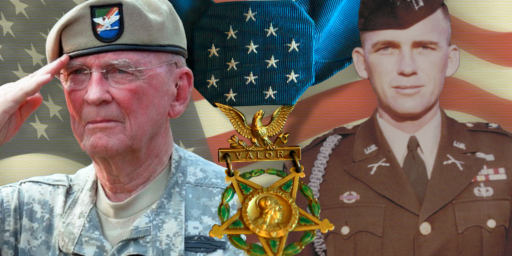Army Reorganization
StrategyPage reports a major rethinking in the way the Army is organized, along lines many of us have advocated for years:
The U.S. Army is now experimenting with allowing troops to apply for jobs via a web site. The army is currently undergoing a major reorganization, transforming its combat divisions to units with five combat brigades, instead of the usual three, and putting more support troops in the brigades. The division headquarters will now act more like the traditional corps headquarters, and will control as many brigades as are needed for an operation (like from two to eight or so.) Someone got the idea of taking all this reform a little further and using a new term for brigades; “Units of Action.†Division headquarters will now be called a “Unit of Employment.†These two terms will most likely be widely ignored by the troops.
Some of the most useful changes underway have to do with how the careers of soldiers are handed. The new brigades (er, “Units of Actionâ€) will keep most of their troops for at least three years before undergoing a large scale departure of troops whose enlistments are up or are retiring, or going off to long term schooling. Then new troops would come in and start the three year cycle all over again.
A goal is to try and keep as many troops as possible in the brigade for their entire 20-30 year careers. This would provide a core of regulars who would, in effect, represent the living memory of the brigade. In past centuries, troops usually joined a regiment for long periods of time, and this group of regulars did wonders for morale and a sense of continuity in the unit. Psychological and sociological studies in the last few decades have revealed that these “regimental veterans†had a large positive effect on the combat effectiveness of the unit. Given the way military careers go in the army, it would not be difficult to have, after 10-15 years, most of your senior NCOs being men and women who had spent their entire careers with the brigade. This means your key supervisory people all know each other, and have worked together, for years. This makes these NCOs more effective. The new plan also seeks to bring officers back to their original brigade as much as possible. Thus after twenty years, an officer whose first assignment was as a platoon leader in the brigade, could end up as the brigade commander. This helps as well. In combat units, such psychological items can give you a life saving edge on the battlefield.
The latest wrinkle among the many army reforms is the use of a web site that allows soldiers, who have sufficient time left in the army, to volunteer for available jobs in the new brigades that are forming. While everyone in the army volunteered to get in, the act of volunteering again brings with it some stature. It means you are committing yourself still more. Thus Army Rangers will point out that they are triple volunteers (for the army, for airborne training and to be in the rangers.) Having more “double volunteers†in these brigades builds morale and cohesion and makes the units more effective and deadlier in combat.
Interesting. We’ll see how this all shakes out. But moving away from the outmoded divisional structure to a more task force oriented system makes sense–and reflects the way the Army actually fights.
I’m less sure about the personnel management aspect of this experiment, at least as applied to the officer corps. We’ve tried some variation of regimental manning several times without much success. Talent and desire to stay in the military aren’t uniformly distributed among lieutenants, so it wouldn’t make much sense to penalize a unit that happened to be staffed by a number of hard chargers by having them compete against each other for command in the unit while rewarding those that come from weaker units with near-automatic promotion.




Especially with the current officer career field system in place, you could see guys specialized in one field (Resource Mgmt, FAO, etc.) for one tour, then heading back to the Regiment for their combat slot. Interesting stuff.
I agree about the competition aspect of this idea. I also would like to disagree with the whole making of this regiment. If it apparently has not worked in the past for most units, excluding the Ranger Reg, how do you think the effectiveness on a unit with protential senior NCOs and officers that have not had the well roundedness of our current military structure?
OK, what i’m saying is that soldiers learn and become effective knowlegable leaders by being in different units and learning how other units work, whats efficiant, what should change, how things are structured, and how standards can be achived by many different backgrounds of other leaders and units. In the long run, these regiments will start to fall into the cycle of “its just how we’ve always done things” routine that starts to kill moral, and overall cohesion of what we call the military.
From a management perspective it would seem that you need a little of both in any group: some “institutional memory,” and some mixing in other groups, infusing them with new blood and getting their ideas on how things should be done.
Just my thoughts on how groups work; this may not apply to the military at all. It’s just that I’ve worked in departments that were essentially run like junior high schools, with one “clique” in charge, and running things rather badly. Unfortunately, sometimes upper management doesn’t always know about this kind of thing–not unless they really do care about morale.
—